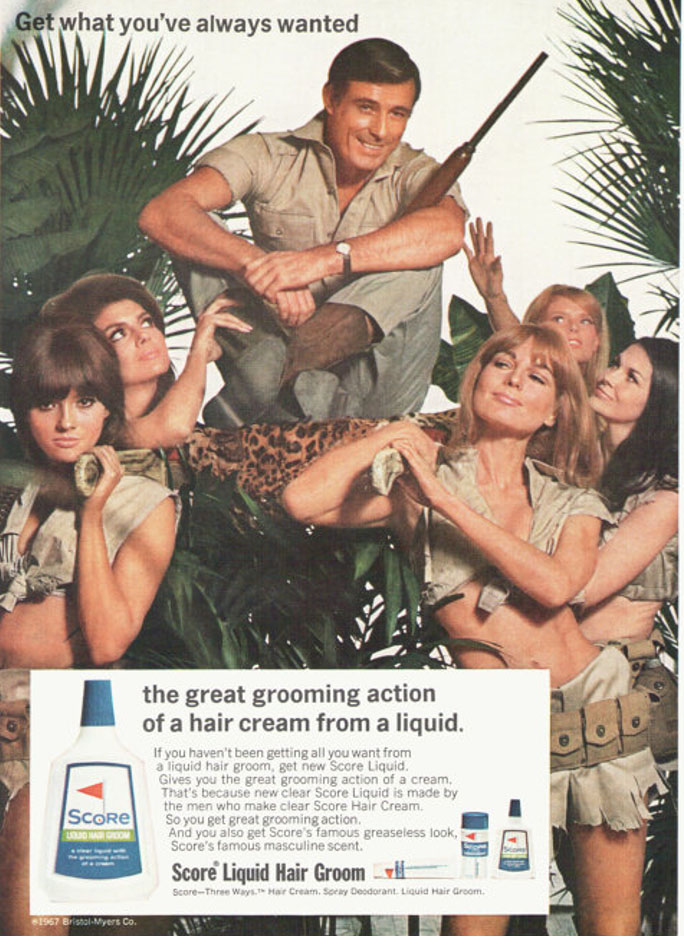
Textual analysis- The guy is sat on a stretcher- looking seat wearing what looks like safari/hunter clothes surrounded by women with less clothing or altered clothing in a certain way to reveal cleavage, tummy, neck and thighs. The women also have ammunition as belts which could make them seem sexier as it implies they are bold and daring and plays along to a fantasy for some men. They are all conventionally attractive and all white. The guy is above the women and the women are all trying to touch him and look at him, almost as if worshipping him.
Semiotics- strap line-“get what you’ve always wanted” to show that this was his fantasy and it came true all because of this product. The dominant signifier is a masculine figure which is reactionary content for an advert that targets men. The connotations with the name of the product “score” could be that he “scored” women. That he is now winning in life.
Representation- He is sat higher up then the women to show his dominance over the women and that he is more superior. It oppresses both women and men as the woman only think he’s sexy because he’s used the product and objectifies women saying that this is what you will earn/own if you look after your hair. It has selective representation and conveys a certain attitude towards the people involved with making this advert. Appealing to the male gaze.
Narrative-The message from this advert is that this guy was nothing until he bought this hair cream. He was probably boring and average and then after using this product he became who he wanted and got what he wanted.
Context- The Score advert was produced in the year of decriminalisation of homosexuality and as such, the representation of heterosexuality could be read as signalling more anxiety than might first appear.



